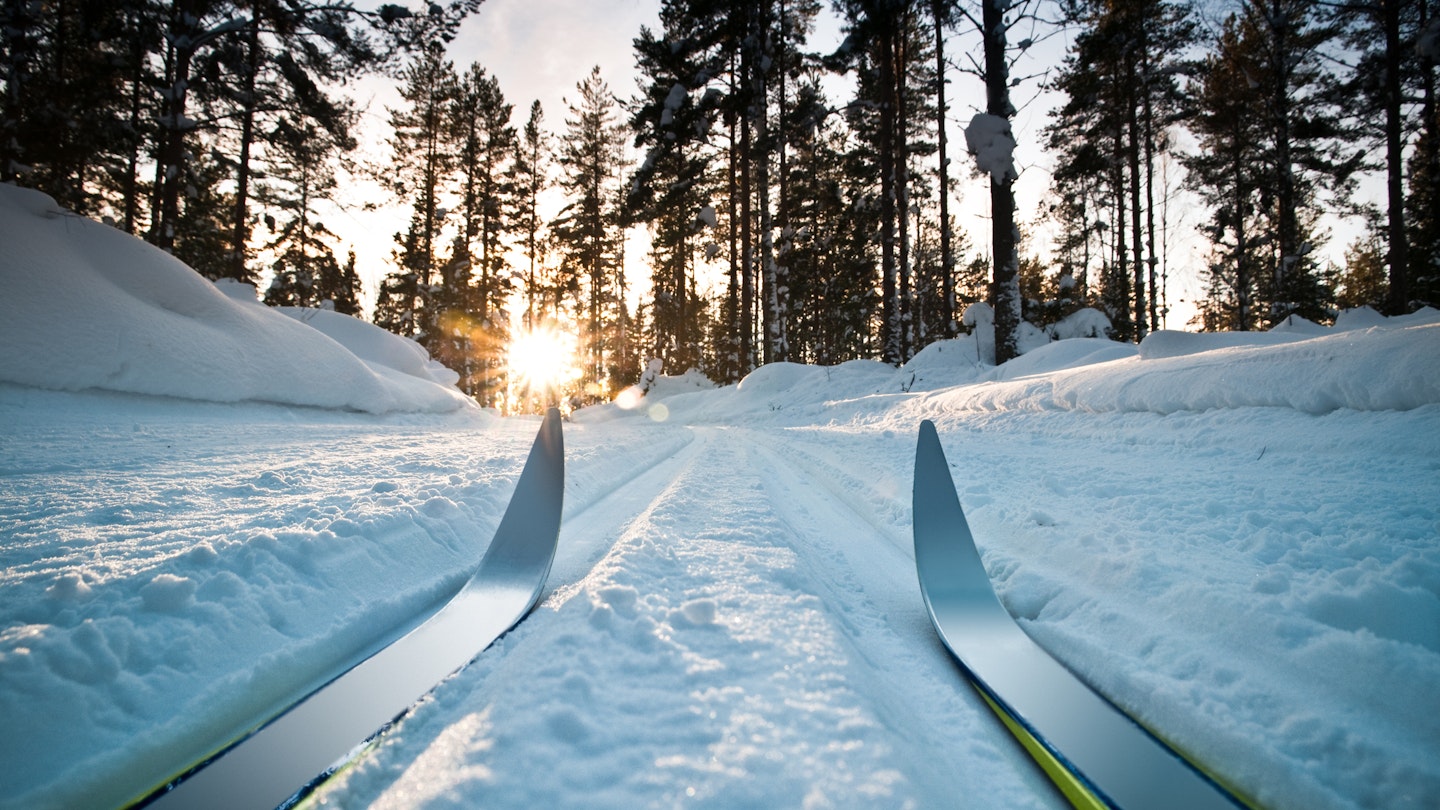One of the world’s oldest winter sports, cross-country skiing is a popular way for people in Sweden to work out when temperatures plummet. It’s gentler on your joints than running and exercises muscles across the entire body.
Meanwhile, you get to breathe in the crisp mountain air and enjoy plenty of stunning snowy scenery. With Vasaloppet, the most popular cross-country race in Sweden, celebrating its centenary, there’s never been a better time to try out this national obsession. Here’s a detailed guide to the tradition of Swedish cross-country skiing and how to try it out for yourself.
The History of Cross-Country Skiing: A Swedish National Obsession
In contrast to downhill skiing, where slopes and lifts help you get around, cross-country skiers use their own body movements to traverse snowy terrains. In the centuries before trains and cars, skiing was an essential mode of transport across the Nordics. By strapping on wooden skis, people could travel long distances to hunt, gather firewood, and connect with others. The word “ski” originates from the Old Norse word skíð, translating to “a stick of wood”.
This technique evolved into a sport in the 19th century when the Norwegian military organized cross-country skiing races to train soldiers. Today, tens of thousands of Scandinavians still compete in public competitions, while many others enjoy skiing at a leisurely pace to lakeside grills or picnic spots during winter.

The Vasaloppet Race in March
Sweden’s most popular cross-country race, Vasaloppet, is the biggest public event of its kind in the world and celebrates its 100th year. The tough 90km (56mi) classic course stretches between the mountainous towns of Sälen and Mora in central Sweden. Competing requires dedicated training throughout the winter, and it’s common to see eager entrants practicing on roller-skis in Nordic cities during the fall.
Moreover, a range of shorter contests is held during Vasaveckan (The Vasa Week), typically the first week in March. Watching these events is a popular spectator activity, broadcast on Sweden’s biggest TV and radio networks. Tens of thousands of people travel to Dalarna each year to cheer on friends and relatives or to catch glimpses of professional stars like Britta Johansson Norgren and Oskar Kardin gliding past in brightly-colored lycra.

How to Try Cross-Country Skiing in Sweden
If you want to test out cross-country skiing, one of the most important first steps is to pay attention to the famous Swedish saying: “there’s no bad weather, only bad clothes” (Det finns inget dåligt väder, bara dåliga kläder). You’ll need warm and breathable gear including thermal leggings, a windproof jacket, a headband or light beanie hat, and gloves.
Cross-country skis are easy to rent at major winter resorts, typically costing around 350 SEK ($38) per day. You can also rent skis in most towns and cities that get snow regularly during winter, which is helpful for day trips to remote locations. Renting from local ski shops or organizations is a viable option.
Moreover, paying for an introductory lesson is advisable, especially if you’ve never been on any kind of skis before. If you’ve already tried downhill skiing and are in good shape, you’ll likely master the basics within an hour. Prices at ski schools range from around 700 SEK ($77) for individual lessons to about 300 SEK ($33) for group classes.

Where to Go for Cross-Country Skiing in Sweden
Northern Sweden: Guaranteed Snow
For guaranteed snow and breathtaking scenery, northern Sweden is your best option. It typically provides ample cross-skiing opportunities from November to April. Many resorts are postcard-perfect, offering accommodations from rustic wooden cabins to minimalist apartments and boutique hotels.
The flagship Funäsfjällen area boasts 300km (186mi) of groomed, well-signposted trails and is a popular location for lessons.
Åre, Sweden’s largest ski resort, is ideal if you want to experience cross-country skiing while enjoying excellent downhill runs and vibrant après-ski nightlife. Accessing the tracks requires a daily or weekly pass in both locations.
In Swedish Lappland, Kiruna, a base for dog-sled and snowmobile experiences, offers a range of cross-country trails maintained by the municipality. Day passes are inexpensive, costing just 50 SEK ($5.50). The public tracks are lit between 6am and 11pm, although you should be prepared for temperatures below -10°C (14°F).
Central Sweden: More Forgiving Temperatures
Dalarna in central Sweden is home to the start and finish points of Sweden’s revered Vasaloppet race, as well as numerous maintained and wild ski trails. The ski season here is slightly shorter than further north, but the climate tends to be more forgiving.
Sälen, a family-friendly village, is the most well-known resort in the region, offering 250km (155mi) of cross-country tracks in addition to more than 180 Alpine slopes. Other popular spots include Mora and Orsa, located at opposite ends of the sparkling Orsa Lake. Accommodation prices soar during race weeks, so plan accordingly.
The concentration of people training for Vasaloppet in Dalarna also means there are plenty of instructors offering private and group lessons, ensuring a supportive environment for beginners.
Southern Sweden: Convenient for Day-Trippers
Billingen in southern Sweden is a certified training base for Vasaloppet and features well-maintained tracks suitable for beginners. Located just outside Skövde, it may lack the rural charm of other cross-country destinations, but offers easy ski hire and coaching options, making it convenient for day-trippers from Gothenburg and Stockholm.
While Stockholm may not seem like the first choice for cross-country skiing, if snow falls, there is a range of free, accessible trails suitable for beginners. Hellasgården, a lakeside nature reserve in Nacka, is easily accessible by bus and features ski-hire stations and a public sauna for relaxation afterward.
Though Stockholm doesn’t have consistent winter snow, checking the conditions on platforms dedicated to winter sports is advisable to ensure a successful skiing experience.





